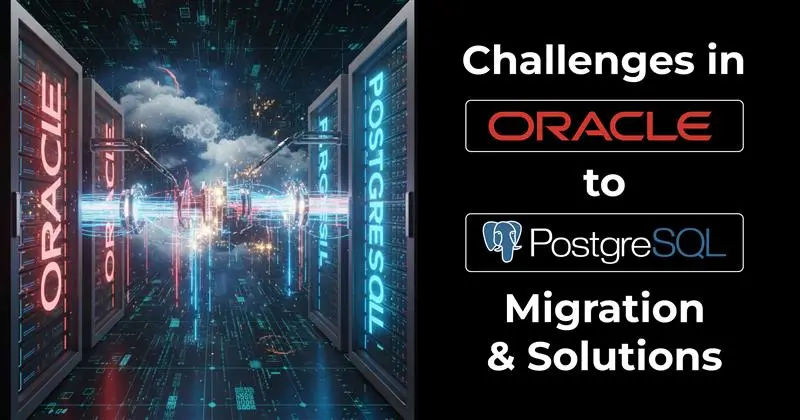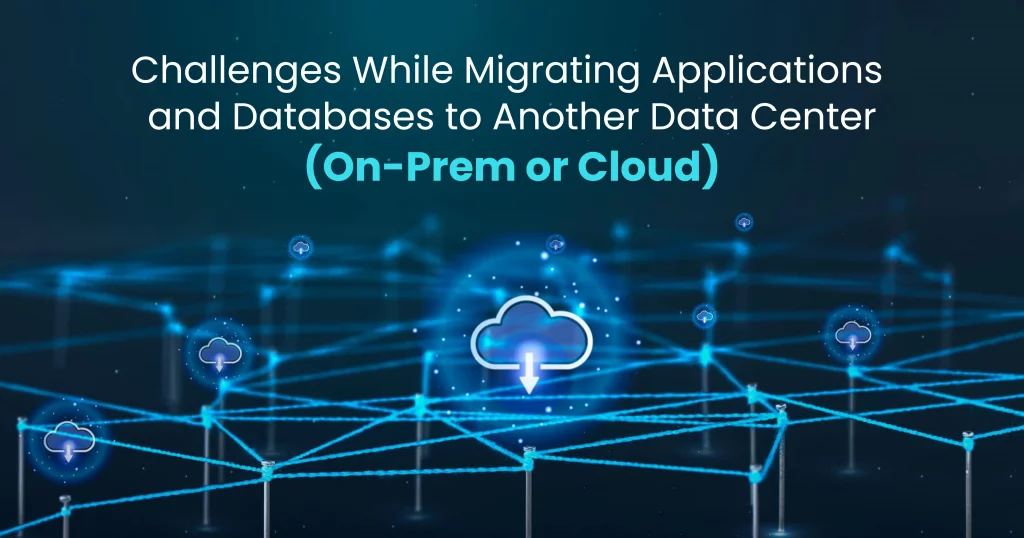What Are Those Challenges Faced During Oracle to PostgreSQL Migration?

Many organizations are reevaluating their database architectures, and one trend that has been gaining significant momentum is the migration from Oracle to PostgreSQL. As companies seek to reduce costs, avoid vendor lock-in, and embrace open-source alternatives, moving to PostgreSQL has become a popular choice. However, this migration is not without its challenges. Migrating from Oracle to PostgreSQL involves more than just data transfer; it requires a complete overhaul of the database structure, application logic, and business processes that rely on the Oracle ecosystem. In this article, we’ll dive deep into the real-world challenges organizations face during this migration process and how to navigate them. Key Challenges Faced During Oracle to PostgreSQL Migration 1. Data Migration and Compatibility Issues One of the most significant challenges during Oracle to PostgreSQL migration is ensuring that data is properly transferred without corruption or loss. Oracle and PostgreSQL differ in terms of data types, syntax, and storage mechanisms. Real-World Example: A retail company migrating its customer data from Oracle to PostgreSQL encountered issues with large binary objects (BLOBs) that were stored in Oracle. These objects did not transfer seamlessly into PostgreSQL, causing delays in the migration project. 2. Application Code Changes Oracle-based applications often make heavy use of Oracle-specific SQL functions, stored procedures, and triggers, many of which are not directly compatible with PostgreSQL. This means that application code and business logic need to be refactored to work with PostgreSQL’s syntax and capabilities. Real-World Example: An e-commerce platform relying on Oracle’s extensive PL/SQL-based triggers to manage inventory control faced significant delays when migrating to PostgreSQL. They had to rework each trigger and stored procedure to match PostgreSQL’s syntax, leading to unexpected costs and resource allocation. 3. Data Integrity and Consistency During a database migration, ensuring data integrity is crucial. Any migration process carries the risk of inconsistent data if not properly validated. Data integrity issues may arise when: Real-World Example: A financial institution migrating to PostgreSQL from Oracle discovered data integrity issues in their customer account records after the initial migration. The foreign key constraints in Oracle didn’t align correctly with the relational structure in PostgreSQL, leading to data inconsistency. They had to perform an additional round of validation to ensure accuracy. 4. Performance Tuning and Optimization PostgreSQL, while highly capable, requires specific tuning to reach the level of performance that Oracle users are accustomed to. Optimizing query performance in PostgreSQL involves: Real-World Example: A global telecom company migrating from Oracle to PostgreSQL experienced a performance dip in their reporting tools. Complex, resource-heavy queries that ran quickly in Oracle began to perform sluggishly after the migration. It took several months of tuning the PostgreSQL settings and rewriting queries to achieve similar performance levels. 5. Tool and Application Compatibility Many organizations have built sophisticated integrations around Oracle’s ecosystem, such as Oracle BI (Business Intelligence), Oracle RAC (Real Application Clusters), and Oracle Data Guard. Replacing Oracle’s proprietary tools with open-source alternatives that work seamlessly with PostgreSQL can be challenging. Real-World Example: A logistics company that migrated to PostgreSQL from Oracle struggled with integrating their BI reporting tools, which were heavily customized to Oracle’s native SQL. They faced delays in upgrading the reporting system and had to employ a hybrid strategy during the transition. 6. Lack of Skilled Resources Oracle to PostgreSQL migration is a highly specialized task. Many organizations find themselves lacking in-house expertise to handle the intricacies of such a complex migration. Finding skilled professionals who understand both Oracle and PostgreSQL’s architecture, performance tuning, and troubleshooting can be time-consuming and expensive. Real-World Example: A healthcare organization planning to migrate their patient management system from Oracle to PostgreSQL faced difficulties finding experts in PostgreSQL database architecture, resulting in longer project timelines and increased costs. 7. Downtime and Risk Management For mission-critical applications, minimizing downtime during the migration is a top priority. However, the more complex the migration, the harder it becomes to ensure that the transition occurs smoothly without service interruptions. Real-World Example: A manufacturing company migrating its inventory management system to PostgreSQL from Oracle experienced significant downtime during the migration. They faced a huge business risk as the application that manages inventory was down for over 24 hours, impacting their operations. Clonetab: The Solution for Oracle to PostgreSQL Migration Challenges Despite the significant challenges involved, the migration from Oracle to PostgreSQL doesn’t have to be a daunting task. Clonetab, an automated cloning and migration solution, offers a streamlined approach to handle the complexities of this transition. Here’s how Clonetab can help: In conclusion, while migrating from Oracle to PostgreSQL presents several challenges, with the right tools and strategies, it is certainly achievable. Clonetab offers an efficient, automated solution that can simplify and accelerate the migration process, helping businesses reduce risks, optimize performance, and minimize downtime.
Challenges While Migrating Applications and Databases to Another Data Center (On-Prem or Cloud)

Migrating applications and databases to a new data center—whether on-premise or cloud (OCI, Amazon, or Azure)—presents numerous challenges. Organizations must ensure minimal downtime, maintain data integrity, and adapt applications to new cloud-native environments while mitigating risks of performance degradation, security vulnerabilities, and compliance issues. Key Challenges & Solutions for Migrating Applications and Databases to another Data Center 1. Data Consistency and Integrity One of the primary concerns during migration is ensuring that data remains consistent and intact across diverse IT environments. Any data corruption, loss, or duplication can have severe consequences for business operations. Challenges: Solutions: 2. Downtime and Business Continuity Minimizing downtime during migration is critical to prevent business disruption. Unexpected delays or failures can lead to significant financial losses, particularly for mission-critical applications. Challenges: Solutions: 3. Application Reconfiguration and Compatibility Applications often require reconfiguration to function properly in a new environment. Differences in infrastructure between on-prem, hybrid, and multi-cloud setups (OCI, Amazon, or Azure) can lead to compatibility issues. Challenges: Solutions: 4. Security and Compliance Risks Data migrations can expose sensitive data to security risks and compliance violations, especially when moving workloads to a new infrastructure in OCI, Amazon, or Azure. Challenges: Solutions: 5. Performance Degradation Post-Migration Even after a successful migration, performance issues may arise due to differences in infrastructure, storage types, or network configurations. Challenges: Solutions: CT-LAS: The Perfect Solution for Cloud & On-Prem Migration Clonetab’s Lift & Shift (CT-LAS) Migration Solution is designed to overcome these challenges, ensuring a seamless transition with minimal disruption. With features like zero data loss, automated validation, incremental data synchronization, and real-time monitoring, CT-LAS guarantees: Conclusion Migrating applications and databases to a new data center or cloud is a complex process with multiple challenges. Organizations must adopt a strategic approach, leveraging robust validation, synchronization, security, and performance optimization measures to ensure a smooth transition. Clonetab’s CT-LAS provides the perfect solution, enabling hassle-free, secure, and highly efficient migrations to OCI, Amazon, or Azure. Contact us today to schedule a consultation and ensure a smooth transition to your new cloud or on-prem infrastructure.
